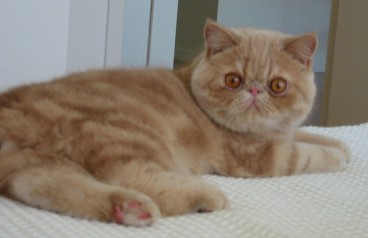
Exotic Shorthair
Veterinarian Reviewed on January 4, 2008 by Dr. Janice Huntingford
Physical Characteristics
Breed Group:
Shorthair Group.
Weight:
9-12 pounds.
Height:
The size of these cats tends to be larger than average.
Color(s):
Exotic Shorthairs come in an array of different colors including blue, red, black, cream, chinchilla silver, and shaded tortoiseshell.
Coat:
This breed has a short, dense, and plush coat.
Overview
Character:
Exotic Shorthairs are sweet and affectionate cats. While calm and easy-going, these cats are also playful and energetic. Exotic Shorthairs are great lap cats.
Country of Origin:
USA.
History:
This breed was developed in the United States during the 1960’s when American Shorthairs and other shorthairs were crossed with Persians. The Exotic Shorthair was recognized by the Cat Fanciers Association in 1966.
Name:
This breed was originally named “Sterling” due to its silver coat. However, the Exotic Shorthair is a completely different breed from the one now called Sterling.
Temperament:
This breed is very gentle and has a calm disposition. These cats like to be with their owners and don’t like to be left alone. Exotic Shorthairs get along well with other cats and with dogs.
Care
Training:
Exotic Shorthairs are very intelligent and quite trainable.
Activity:
Exotic Shorthairs are energetic cats that love to play.
Ownership:
Exotic Shorthairs are great cats for owners who like Persians but don’t want to deal with the high maintenance of a Persian coat. Exotic Shorthairs are also excellent for households with children, other cats, or dogs. These cats are very loving and playful companions.
Breeders
No breeders listed at this time.
Sign up for our newsletter and receive more articles and the latest pet health updates and special offers.
Our Expert
 Dr. Janice Huntingford
Dr. Janice HuntingfordJanice Huntingford, DVM, has been in veterinary practice for over 30 years and has founded two veterinary clinics since receiving her Doctor of Veterinary Medicine at the Ontario Veterinary College, University of Guelph. She has studied extensively in both conventional and holistic modalities. Ask Dr. Jan

